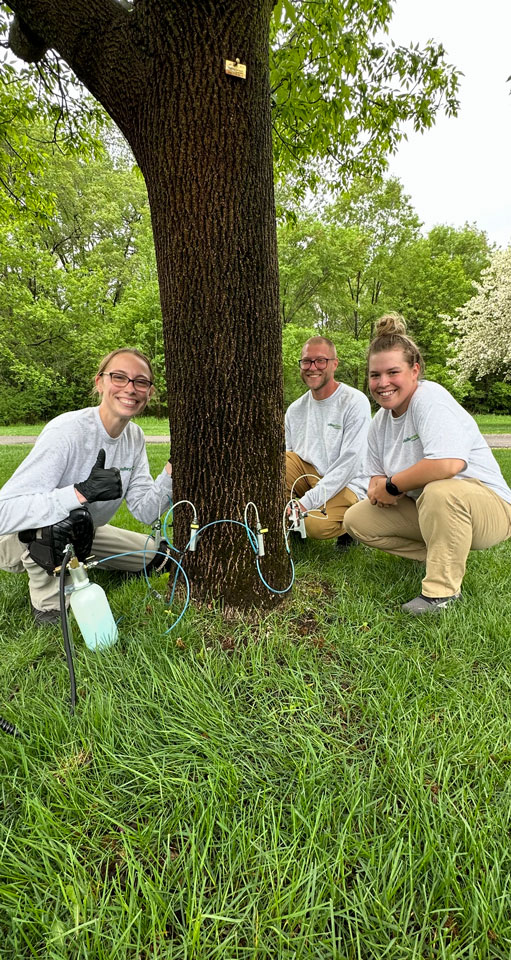Emerald Ash Borer Treatment in Central Minnesota
Trusted EAB Control Since 2003
If you live in the greater St. Cloud area — including St. Cloud, Sartell, Sauk Rapids, Waite Park, St. Augusta, St. Joseph, or Clear Lake — your ash trees are at serious risk from Emerald Ash Borer (EAB). EAB spreads both by flight and through infested firewood, making it alarmingly easy to transport unknowingly.
Valley Green Companies uses a 99% effective, micro-infusion treatment proven to stop EAB in its tracks — but it must be applied early. Learn how we protect ash trees in Central Minnesota and get your free estimate today.
Emerald Ash Borer Treatment Free Estimate
Or Call Us Locally At (320) 259-5959
Central Minnesota Emerald Ash Borer Treatment FAQ
St. Cloud Area Emerald Ash Borer News
Forestry Department
The City of St. Cloud
Parks Department
Stearns County Website
Parks Department
Benton County Website
Parks & Recreation Department
Sherburne County Website
Stearns County Extension Office
University of Minnesota Extension
Benton County Extension Office
University of Minnesota Extension
Sherburne County Extension Office
University of Minnesota Extension
Biological Control Of Emerald Ash Borer
Minnesota Department of Agriculture
Emerald Ash Borer Found In St. Cloud
WJON
February 10, 2023
Emerald Ash Borer Discovered In Stearns County
Minnesota Department Of Agriculture
April 2, 2019
Emerald Ash Borer Found In Trees In Sauk Centre
WJON News
April 2, 2019
Emerald Ash Borer Discovered In Stearns County
West Central Tribune
April 4, 2019
Invasive Bugs Could Ruin Your Trees
St. Cloud Times
May 10, 2019
Ash Tree Infested with EAB
Eric Rebek, Michigan State University
Healthy Ash Tree
Eric Rebek, Michigan State University
Your Local Central Minnesota Area EAB Treatment Partner
Areas We Serve
St. Cloud • Sauk Rapids • Sartell • Rockville • Stearns County











